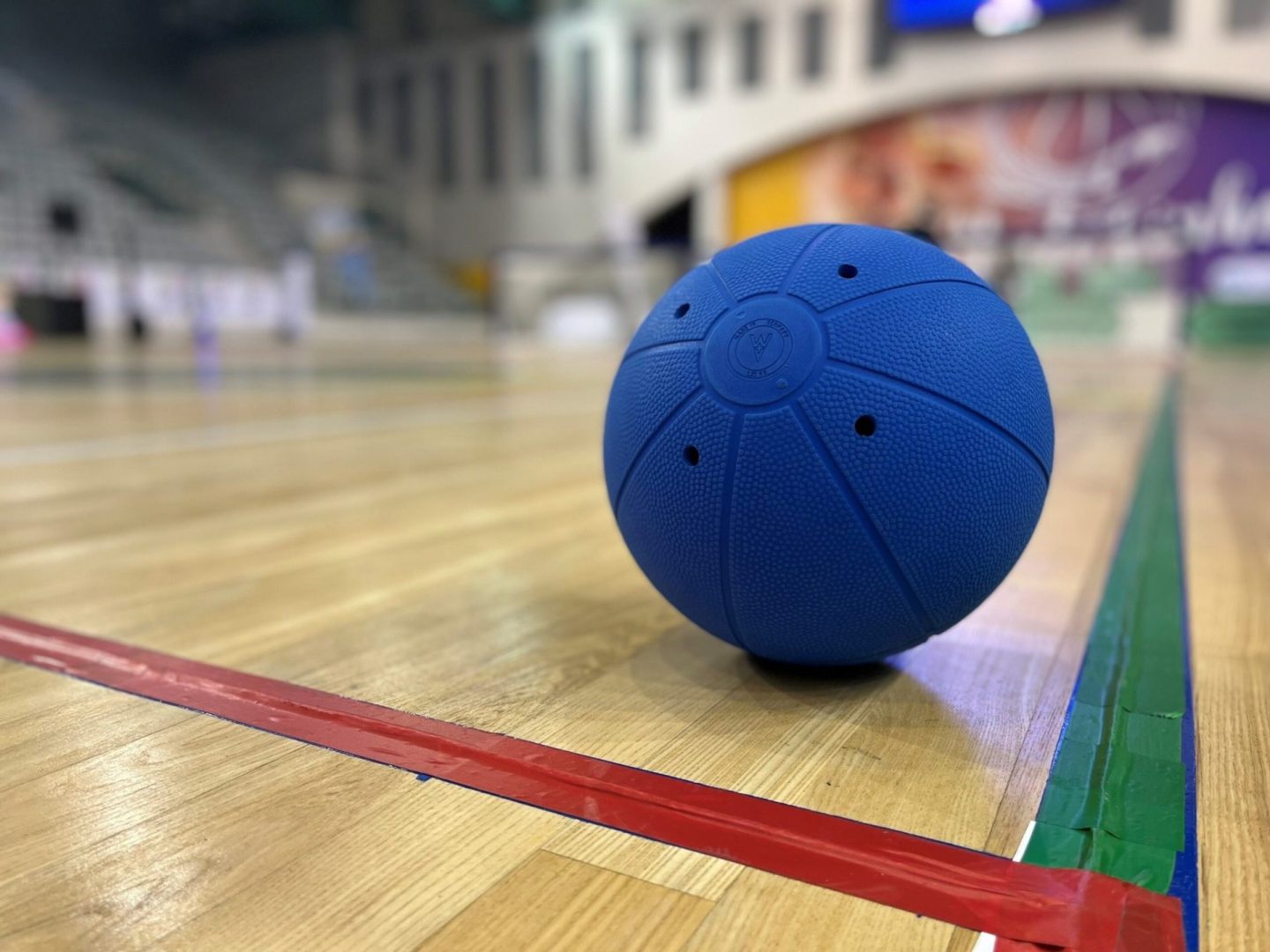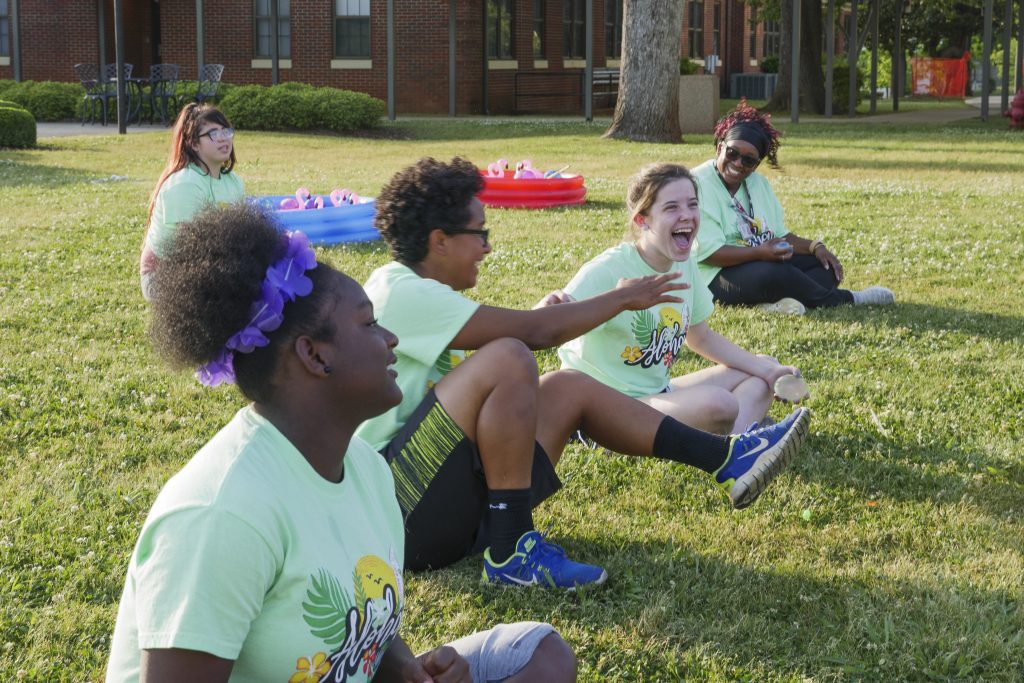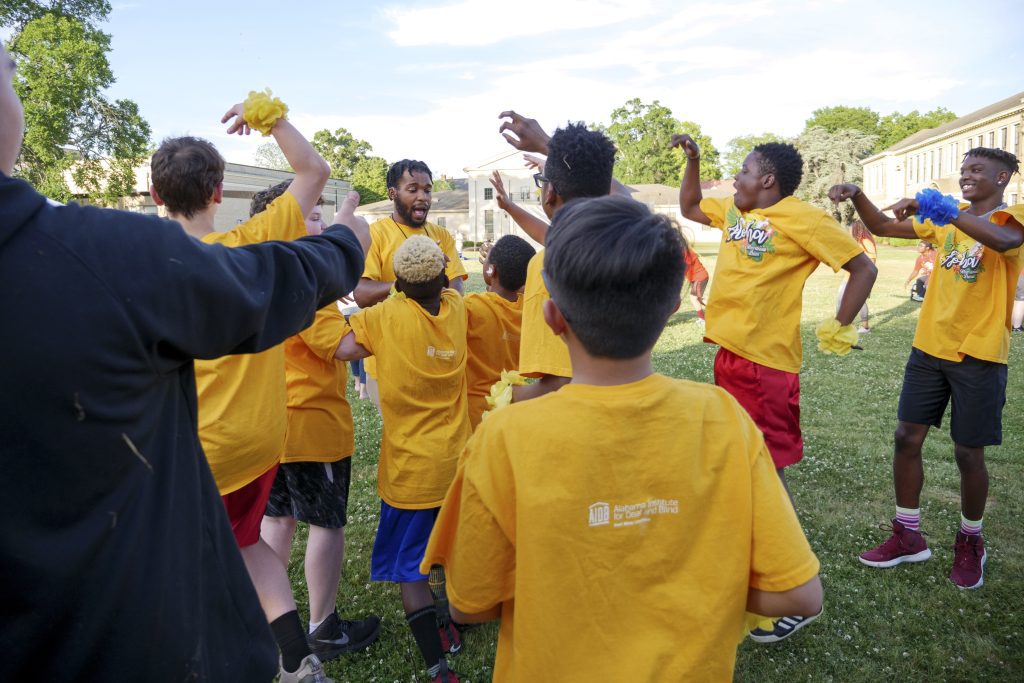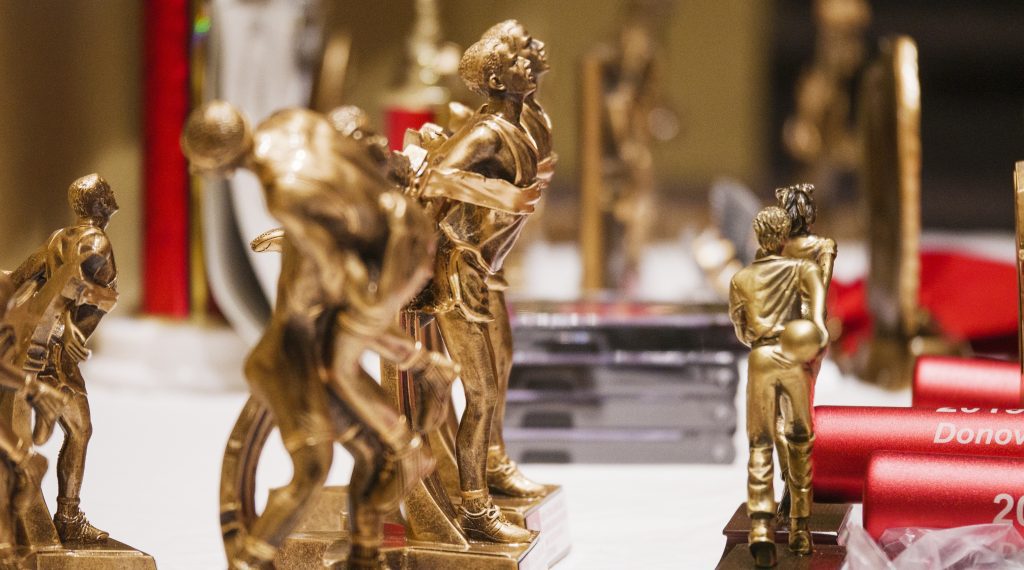To ensure gift delivery by 12/25, please place orders via UPS shipping no later than 12/17.
CloseLearning About Goalball from a Paralympian

Played competitively in 112 countries, goalball is a team sport for athletes who are blind and low vision. We recently spoke to three-time Paralympian Amanda Dennis about goalball, her journey as an athlete, and how to get involved in the sport.
What is Goalball?
According to the U.S. Association of Blind Athletes (USABA), Austrian Hanz Lorrenze and German Sett Reindle invented goalball in 1946 to keep blinded World War II veterans physically active. Today, athletes of all ages play goalball on club and Paralympic teams across the world.
Goalball is a three-on-three sport with six players on a team. According to Amanda, “There are three players on the court at once, and your coaches have four timeouts and four substitutions.” Goalball is played on a 9 by 18-meter volleyball sized court with raised tactile lines. The goalball is about 1.25 kilograms and has three bells inside of it so blindfolded athletes can auditorily track where the ball is on the court. Athletes can play one of three positions: left wing, right wing, and center. The players wear elbow pads, knee pads, hip pads, eye shades, and chest protectors. “The goal of the game is to throw the ball past your opponents. They have to dive out and try to block the ball to save it before it goes into the 9-meter-wide net behind you,” Amanda said. Both teams take turns throwing and blocking. To block the ball, players lay on their side on the ground. Their feet and arms are stretched out, and their heads are propped behind their upper arm. In the U.S., players throw the ball in an underhand motion, which is similar to the throw used in bowling. “In Brazil, players throw between their legs backward,” stated Amanda. “They start by facing the net. Then they run backward and throw the ball between their legs to the other side of the court. There’s also a 360 throw, where athletes spin around in a 360 degree? motion to throw. It can be comparable to somebody throwing a discus.” When thrown, balls on the elite level go 40 to 60 miles per hour.
The goalball game is split into two, 12-minute halves with a three-minute halftime where the teams switch sides of the court. “There are stoppages in play. Every time the ball is thrown out, there’s a penalty. A goal, or any sort of stoppage where the referee blows their whistle, causes the clock to stop. Games take 45 minutes to play out fully, both internationally and domestically,” Amanda says. During the game, spectators and players alike need to be quiet. They can only make noise when the referee blows their whistle for a stoppage like an out or a goal.
Amanda’s Goalball Journey
When Amanda was seven, she went to a camp hosted by BlazeSports America for athletes who are blind and low vision and learned how to play goalball. “Goalball is one of the only sports that’s equalized. It doesn’t matter if you have 20/20 vision, if you’re legally blind, or if you have no vision at all. Everybody’s on the same playing field because everybody’s blindfolded, and that was something that made me feel like I finally had an equal footing with the rest of my peers,” said Amanda.
When she returned from camp, Amanda participated in a goalball program hosted by The Center for the Visually Impaired, Atlanta Parks and Recreation, and Georgia Blind Sports Association. “When we wanted to go to adult tournaments, my parents set up a nonprofit called Georgia Association of Blind Athletes,” said Amanda. “I competed on this team at domestic tournaments around the country. Our team’s name was ‘Georgia Firebolts,’ until we changed it to ‘Georgia Phantoms.’” When she was 15, Amanda was selected to compete on the Youth Worlds and Student Games Team. This was Team USA’s U-19 (under 19) team. The competition was hosted at the same time as the IBSA Pan American Games, so the women’s team was also there with their coaching staff. The coaches from the national team chose three of the athletes from the U-19 team to invite to women’s national team training camps, and Amanda was one of the three selected. “We were also given the same opportunities to fight for a spot for the London 2012 Paralympic Team,” Amanda said. “Each of us was invited to one adult international tournament in 2011 to showcase our skills, along with what we showcased at the various training camps from 2010-2012.”
Since then, Amanda has competed in three Paralympic games, playing either center or right wing. Her team finished sixth in the London 2012 games. In Rio 2016, she won a bronze medal, and in Tokyo 2020, she won a silver medal.
Goalball Training
As a Paralympian, Amanda continually trains with her coaches and teammates. Amanda was at the Paralympic training site in Fort Wayne, Indiana this year from January-November. She trained for four hours, five days a week and had the weekends off. Amanda said, “We have a dietitian on our team who meets with each of us and makes an individual plan on things that work best for us, depending on what our body composition is, what our goals are, if we’re looking to gain muscle, or lean up, etc. We train both on and off the court. On court is a lot of training on different throws, whether it’s bounce balls, skip balls, smooth balls, defense, accuracy on throwing, and our conditioning in game. Off court training is weightlifting and a lot of conditioning like circuit training, sprints, and agility. We have a goalball coach, a strength and conditioning coach, and a sports psychologist that we meet with on a regular basis to help us with some of the trials and tribulations that we have on court. We also have different people on staff who help with rehabilitation from injuries.”
This year, Amanda played in the Pan American Games in Santiago, Chile where her team won silver. Unfortunately, the U.S. Women’s Team will not be competing in the Paris 2024 Paralympic Games, but they will be participating in the 2028 Paralympic Games in L.A. As the host country, the U.S. team is guaranteed a spot.
Get Involved!
“My favorite thing about the game is that the sport is for everybody, and it’s always evolving,” said Amanda. “When you play the sport, whether you’re aiming for the Paralympics or for a national championship, or even a regional goalball gold medal, you can evolve with the game. You can be as good as you want if you put in the work. Jump in headfirst and give it a try. Learn all the cool things goalball has to offer. You’ll never find another community that’s a family like goalball.”
Go to usaba.org to learn more about goalball and how you can get involved with a team near you. Alternatively, you can register for a goalball tournament, and the organizers will put you on a team to play with during the competition.
Share this article.
Related articles

Adapted Physical Education: Enhancing Inclusivity for Blind and Visually Impaired Students: The Future of Inclusive P.E.
No child should be left out of an activity due to being blind or having low vision. Unfortunately, this happens...

Exploring the World of Adapted Physical Education: Enhancing Inclusivity for Blind and Visually Impaired Students: Partnering with the Blind and Visually Impaired Community
Finding a way to adapt to a sport and building a community with other athletes can be a challenge. Many...

Exploring the World of Adapted Physical Education: Enhancing Inclusivity for Blind and Visually Impaired Students: Overcoming Challenges and Addressing Concerns
Parents and physical education teachers may hesitate when it comes to allowing their child or student who is blind or...
